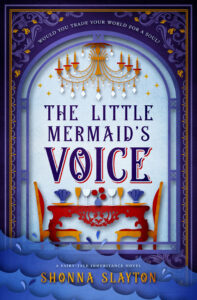For the A to Z blogging challenge I’ve decided to blog about the 1940′s. And in the spirit of the 1940′s, at the end of the month, I’ll be giving away an ebook copy of one of my favorite books, Summer at Tiffany, to one of my newsletter subscribers (sign-up on the sidebar if you are so inclined.) It’s a light-hearted memoir of two college girls let loose in New York City for a summer. What a hoot
During most of WWII the United States barred large groups of refugees from entering the country. It wasn’t until the summer of 1944 when the war was nearing the end, that a “Safe Haven” was allowed at Fort Ontario in Oswago, New York. Only about a thousand refugees were chosen in Italy, most of them of Jewish descent, to make the special trip over. So few, when so many were in need.
They were housed at the empty fort, kept behind a barb-wire topped fence. Their status was a strange one–guests without Visas, not allowed to work or leave the area. At the end of the war, many of them were finally allowed to apply for immigrant status. Of those who stayed, many left their mark on America in amazing ways. You can read more about them in the book Haven: The Dramatic Story of 1,000 World War II Refugees and How They Came to America by Ruth Gruber. She was the one tasked with the job of sailing with the refugees and helping them make the transition to the shelter. Fascinating piece of history.






That book sounds absolutely fascinating. My husband’s uncle died yesterday at the age of 94. He took part in the D-Day Landings in France and was one of the first soldiers to get to Belsen. it was an experience that haunted him for the rest of his life.
I’m sorry for your loss. He would have been one of the young men prayed for on that day in history. For “P” I’ve posted President Roosevelt’s D-Day Prayer.
“Almighty God: Our sons, pride of our Nation, this day have set upon a mighty endeavor…”
American or other nationality, a lot of prayers were being said that day.
Reading about Oswego and the Italian immigrants reminds me of the book I just translated which, though dealing mostly with the American Mafia during the ’20s and ’30s and one of the players who to this day was never mentioned, it also speaks of post WWII in Italy.
Having read Exodus by Uris, I knew that the US had accepted a very limited number of Jews from Italy, but had no idea they were placed in an interment camp here in New York. That was very interesting to learn, and I thank you.
I’m returning your A-Z visit and am glad I did.
My latest article in the A-Z is: http://marypurpari.blogspot.com/2015/04/m-is-for-mormons-and-miracles.html
Mary, what is the name of the book you translated? Sounds interesting, too.
The NYS Museum has an exhibit on this sanctuary, tucked out of the way in a zig-zaggy hallway that starts in the area with exhibits about historical NYC. My mother wouldn’t let me go through the exhibit till I was about twelve, since she felt I were too young to process that depressing information. The first year I was a camp counselor at the local Orthodox day camp, it was my turn to tell the children they couldn’t go in that exhibit because it was too adult and sad.
It’s really a blot on U.S. history how so many worthy would-be immigrants were kept out due to xenophobic quotas, and how the authorities kept insisting on these precious miles of red tape even in the midst of a dire emergency.
How interesting, Carrie-Anne! So much sadness around WWII.